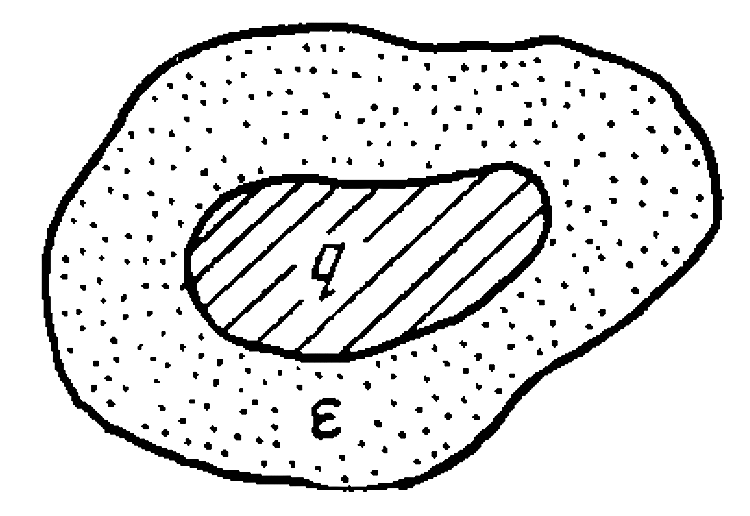In the given diagram, there is a conducting sphere of radius r which is surrounded by a dielectric of relative permittivity . If conducting sphere is given charge q, then surface density of polarization charges, on the outer surface of the dielectric layer, is

The correct Answer is:D
Step by step video, text & image solution for In the given diagram, there is a conducting sphere of radius r which is surrounded by a dielectric of relative permittivity epsilon_(r). If conducting sphere is given charge q, then surface density of polarization charges, on the outer surface of the dielectric layer, is by Physics experts to help you in doubts & scoring excellent marks in Class 12 exams.
Updated on:21/07/2023Topper's Solved these Questions
Similar Questions
A conductor of orbitrary shape, carrying a charge q, is surrounded with uniform dielectric of permittivity ε (Fig).

Find the total bound charges at the inner and outer surfaces of the dilectric.
View SolutionFind the capacitance of an isolated spherical conductor of radius a surrounded by a concentric layer of dielectric of outer radius b and relative permittivity. ε
View Solution
Knowledge Check
A conducting sphere of radius r has a charge . Then .
Athe charge is uniformly distributed over its surface if there is an external electric field .BDistribution of charge over its surface will be non uniform if no external electric field exist in space,CElectric field strength inside the sphere will be equal to zero only when no external electric field existsDPotential at every point of the sphere must be sameA solid conducting sphere of radius r is given some charge. Then :
AThe charge is uniformly distributed over its surface, if there is an external electric field.BDistribution of charge over its surface will be non uniform if no external electric field exist in spaceCElectric field strength inside the sphere will be equal to zero only when no external electric field existsDPotential at every point of the sphere must be same in all casesA and C are concentric conducting spherical shells of radius a and c respectively.A is sueeounded by a concentric dielectric medium of inner radius a, outer radius b and dielectric constant k. If sphere A is given a charge Q, the potential at the outer surface of the dielectric is
 AQ4πesplion0kbBQ4πε01a+(10k(b−a))C(Q094πε0b)Dnone of these
AQ4πesplion0kbBQ4πε01a+(10k(b−a))C(Q094πε0b)Dnone of these
A conducting sphere of radius R=20 cm is given a charge Q=16μC. What it →E at centre
View SolutionConducting ball of radius a is surrounded by a layer of dielectric having inner radius a and outer radius b. The dielectric constant is K. The conducting ball is given a charge Q. Write the magnitude of electric field and electric potential at the outer surface of the dielectric.

View SolutionA conducting sphere of radius 2R carrying charge Q is joined to an uncharged conducting sphere of radius R. Find the charge flow through cinnecting wire.
View SolutionFind the capacitance of an isolated ball-shaped conductor of radius R1 surrounded by an adjacent concentric layer of dielectric with permittivity ε and outside radius R2.
View SolutionA conducting sphere of radius R is given a charge Q. The electric potential and the electric field at the centre of the sphere respectively are
View Solution
